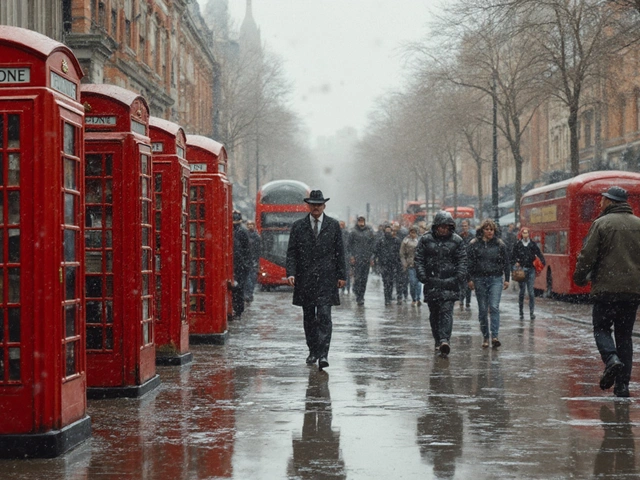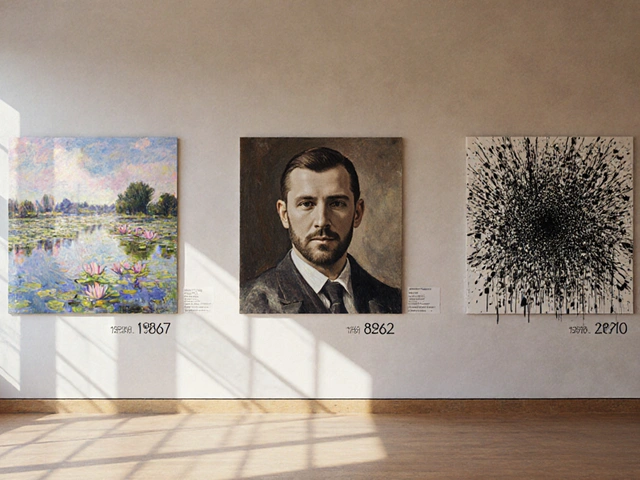Landing on the scene in the late 1960s, Land Art, also known as Earth Art, swept the art world off its feet with its inventive use of natural landscapes.
Years later, this unique form of creativity is still going strong, and its relevance has only grown. Today, Land Art isn't just about putting beautiful pieces outdoors; it's about reconnecting with nature, promoting environmental awareness, and helping people find peace in the hustle and bustle of modern life.
For those unfamiliar, Land Art involves creating art directly in the landscape using natural materials like soil, rocks, and leaves. Unlike traditional art confined to galleries and museums, these works embrace the elements, becoming part of the environment they inhabit.
- The Connection Between Land Art and Nature
- Impact on Environmental Conservation
- Mindfulness and Mental Health Benefits
- Famous Examples of Land Art
The Connection Between Land Art and Nature
The relationship between Land Art and nature isn't just about the materials used; it's about an entire experience that connects people with their environment. Land Art often involves creating large-scale pieces that are integrated into a landscape, emphasizing how artists interact with the natural world. This kind of art invites viewers to not only observe but also immerse themselves in nature, bridging a gap that's often widened by urban living and modern lifestyles.
One of the guiding principles of Land Art is its site-specific nature. Unlike traditional art that can be moved from one gallery to another, Land Art is generally meant to stay put. This permanence grounds the art in its environment. For example, Robert Smithson's iconic Spiral Jetty from 1970, a massive coil made of rock and earth in Utah's Great Salt Lake, wouldn't carry the same impact if it were displayed in a traditional setting. The natural elements—water, earth, and sky—play a crucial role in making the artwork what it is, highlighting a true symbiosis between art and nature.
When discussing the essence of Land Art, it's hard to ignore its temporal qualities. Because these artworks are subjected to the elements, they change over time. Weathering, erosion, and seasonal shifts transform them, infusing them with a dynamic life of their own. This evolving nature forces both artists and audiences to develop a new way of appreciating art—not as static pieces, but as living, breathing entities that mirror the Earth's ever-changing state.
Land Art also does a fabulous job of drawing attention to environmental issues. By situating art in nature, artists naturally prompt observers to think about the environment. Works by artists like Nancy Holt, whose Sun Tunnels filter sunlight to create unique visual effects, are not just visually stunning but also evoke a sense of awe about the natural world's intricacies. This often encourages people to become more mindful of their environmental footprint.
Moreover, Land Art provides an invaluable educational experience. Walking through an outdoor sculpture or installation gives people a hands-on opportunity to learn about geology, botany, and ecology. Richard Long's A Line Made by Walking (1967) exemplifies this concept brilliantly. Long's simple act of walking back and forth to create a temporary path in a field makes one reconsider the impact of our most mundane actions on the landscape. Such experiences foster a greater appreciation for conservation efforts and sustainable living practices.
"Art takes nature as its model," said Aristotle, and Land Art demonstrates this relationship vividly. Whether through the echoing curves of Earthworks or the monumental structures built into the landscape, Land Art serves as a constant reminder that human creativity and the natural world are inextricably linked.
The immersive quality of Land Art offers a unique form of escapism. In a world cluttered with digital screens and constant notifications, wandering through a piece of Land Art enables people to switch off and reconnect with the tactile reality of soil, rock, and sky. This immersive experience is increasingly vital in today's society, fostering a sense of peace and mental well-being that many find missing in their day-to-day lives.
Land Art dissolves boundaries between art and the environment, illustrating that both can coexist harmoniously. It brings art out of the galleries and into the world, making it accessible to a broader audience. Whether it's through the ephemeral beauty of Andy Goldsworthy's natural sculptures, which often last only a few hours, or the enduring presence of Walter De Maria's Lightning Field, Land Art strengthens our relationship with the natural world, making us more aware of the beauty and fragility of our planet.
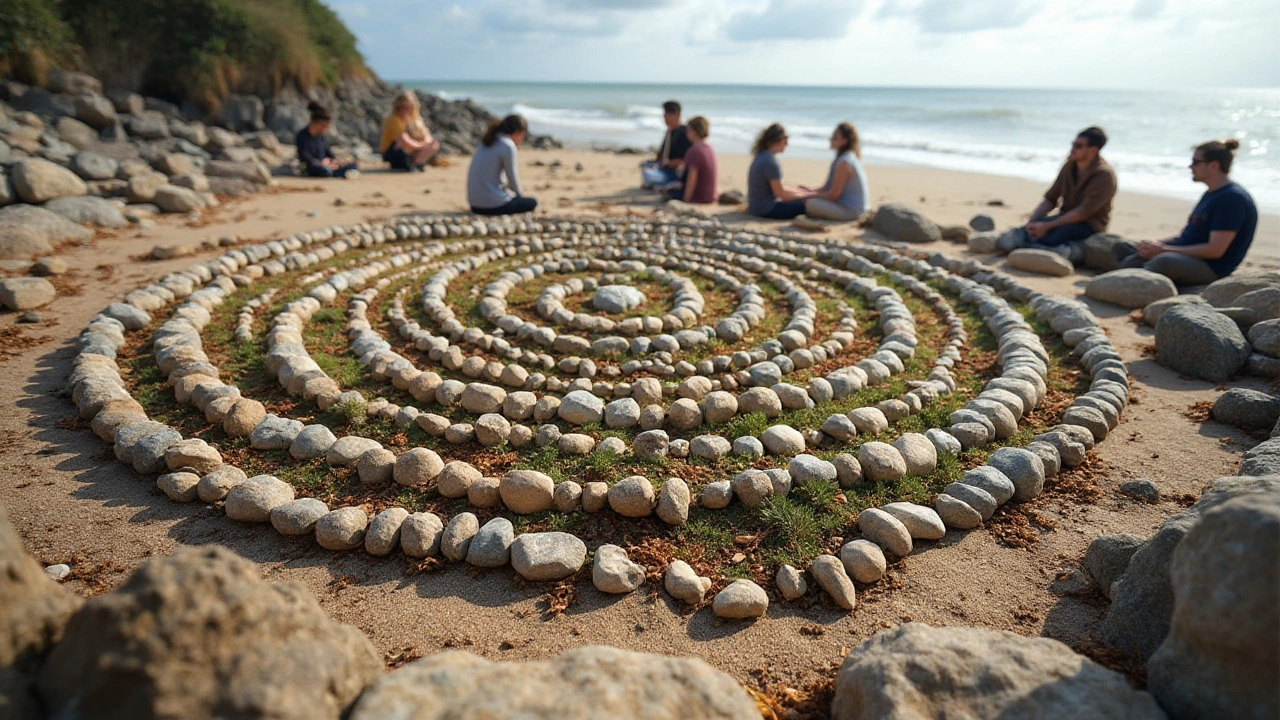
Impact on Environmental Conservation
One of the most remarkable aspects of Land Art is its ability to draw attention to environmental issues. This form of art doesn't just use the natural landscape; it transforms it into a statement. By integrating natural materials into their works, artists can highlight the beauty and fragility of our planet in ways that photographs and documentaries often can't.
Take, for instance, the iconic "Spiral Jetty" by Robert Smithson. Created in 1970, this massive spiral made from mud, salt crystals, basalt rocks, and water is located in Utah's Great Salt Lake. The changing water levels of the lake mean that the Jetty sometimes disappears entirely, only to resurface again. This ephemeral nature forces viewers to think about the changing environment and how it impacts natural and human-made structures alike.
Another powerful piece is Andy Goldsworthy's "Rain Shadows." Goldsworthy's method often involves using materials available at the site, such as leaves, ice, and stones. His artworks are designed to deteriorate and blend back into the environment, emphasizing the cycle of life and the transient nature of human endeavors. This kind of work serves as a humbling reminder that nature is ever-changing and that our interventions can be fleeting.
"Art is about changing what we see in our everyday lives and representing it in such a way that the viewer is influenced by the new sight," says Andy Goldsworthy, a pioneering artist in the field of Land Art.
Land Art also plays a role in promoting environmental conservation by encouraging sustainable practices. Many Land Artists prefer using materials that can be found on-site rather than bringing in external resources. This not only minimizes the environmental footprint of the artwork but also encourages a deeper understanding of local ecosystems. Artists like Nils-Udo and Richard Long take this approach, creating works that are both non-invasive and beautifully attuned to their surroundings.
Furthermore, some Land Art projects actively contribute to conservation efforts. The Green Cathedral, a project by the Dutch artist Marinus Boezem, involves planting 178 poplar trees arranged to mimic the shape and structure of a cathedral. This living artwork not only provides a visual spectacle but also serves as a carbon sink, aiding in the fight against climate change. Such works demonstrate that art can be a valuable tool for raising awareness and encouraging proactive steps toward environmental preservation.
For anyone interested in experiencing the wonders of Land Art can find numerous installations around the world. These works serve as public reminders of our connection to the earth and inspire a sense of responsibility towards preserving it. Whether through temporary creations like Goldsworthy's ice sculptures or more enduring installations like Smithson's "Spiral Jetty," Land Art challenges us to see nature not just as a backdrop but as an integral part of our lives.
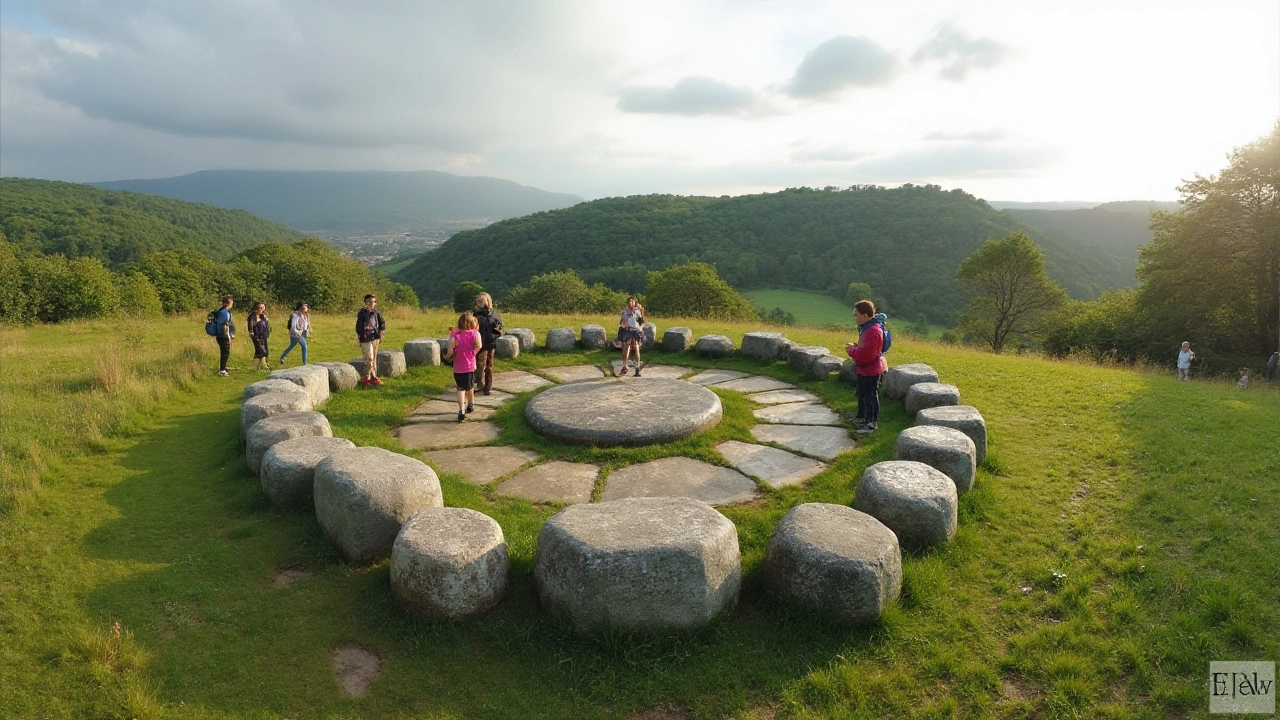
Mindfulness and Mental Health Benefits
Connecting with nature through Land Art offers numerous mental health benefits. This type of art immerses individuals in natural settings, providing them with a peaceful retreat from the chaos of daily life. Studies suggest that spending time outdoors reduces stress, anxiety, and depression. When adding the creativity of Land Art to the mix, these positive effects are often intensified.
The environment provides a meditative space where people can focus on the present moment. This practice aligns perfectly with mindfulness techniques, which encourage individuals to center their thoughts and clear their minds. Engaging with Land Art, be it through creation or observation, facilitates this process, allowing for deep, reflective experiences.
Moreover, Land Art can serve as a therapeutic tool. Art therapy has long been known to assist in healing mental and emotional wounds, and when that art is created in a natural setting, its benefits multiply. Creating these pieces often involves repetitive, calming activities such as arranging stones or molding earth. These actions can induce a state of flow, a mental state associated with happiness and reduced levels of stress.
Many Land Art installations require viewers to walk through natural landscapes, adding a physical component that offers additional mental health perks. Research indicates that light exercise, such as walking, boosts mood and improves cognitive function. Engaging with an art installation during these walks can make the experience even more enriching.
Researchers have also found that disconnecting from technology, even briefly, has significant mental health benefits. Land Art installations, often located in remote areas, necessitate this unplugging from digital devices. The absence of constant notifications and screen time allows visitors to reset and recharge, leading to lower levels of stress and a clearer mind.
As environmental psychologist Stephen Kaplan noted, “nature restores mental functioning in the same way that food and water restore bodies.” This quote underscores the vitality of incorporating nature into our lives, which Land Art can help facilitate.
Creating and experiencing Land Art involves building a strong connection to the earth, resulting in a profound sense of place and belonging. This connection can have lasting mental health benefits, fostering a sense of stability and well-being even after the experience. Nature's beauty and the challenge of sculpting it into art also lead to a deep appreciation for our environment.
So, if you’re looking for effective ways to enhance your mental health, dive into the world of Land Art. Whether you’re visiting an existing installation or creating your own, this form of art offers a meaningful, mindful escape that nourishes the mind and soul. Being outdoors, engaging in creative activities, and connecting with nature can all contribute to a happier, healthier you.
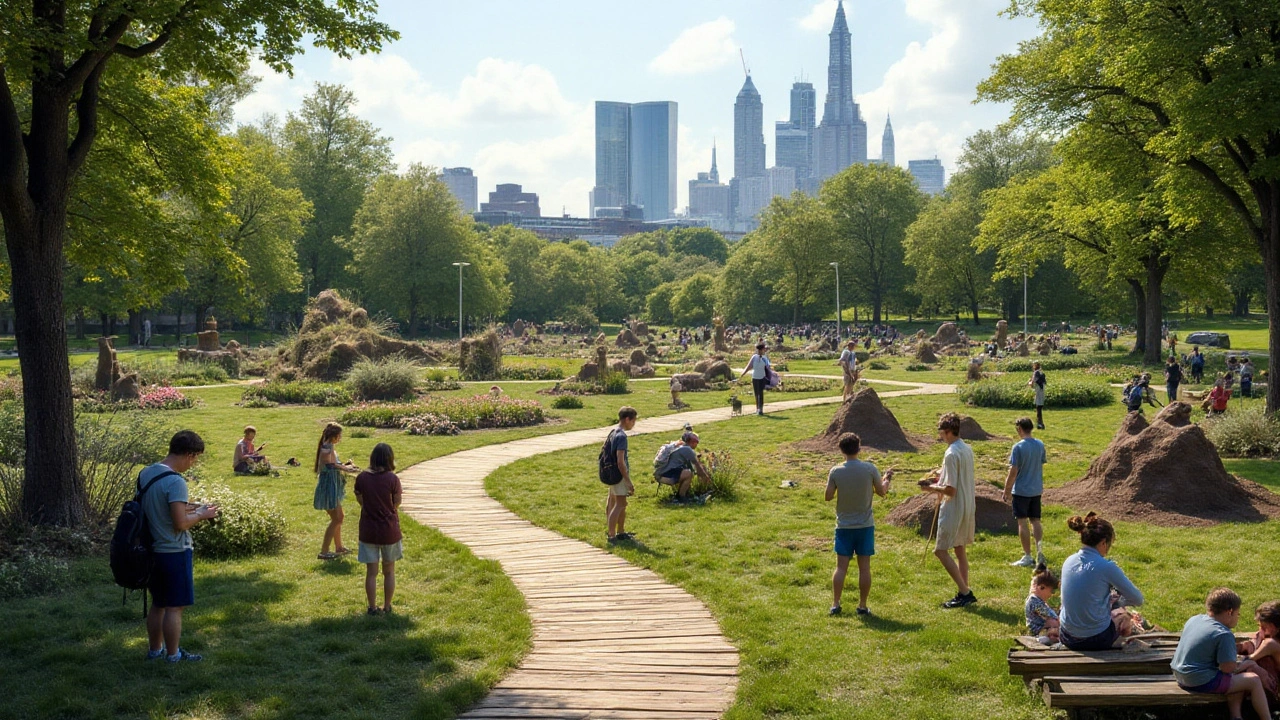
Famous Examples of Land Art
When it comes to Land Art, a few iconic works immediately come to mind, each showcasing the awe-inspiring potential of using nature as a canvas.
Perhaps one of the most renowned pieces is Robert Smithson's Spiral Jetty. Created in 1970, this impressive work can be found on the northeastern shore of the Great Salt Lake in Utah. Made of mud, salt crystals, and basalt rocks, the jetty stretches over 1,500 feet into the lake, forming a grand spiral. The piece has been submerged and revealed multiple times, interacting constantly with the natural environment around it. Smithson's Spiral Jetty stands as a lasting testament to the evolving relationship between art and nature.
Another groundbreaking piece is the work of Christo and Jeanne-Claude, who are famous for their large-scale environmental installations. One of their most remarkable creations is The Gates, which was installed in New York City's Central Park in 2005. Comprising 7,503 gates with free-flowing fabric, the work spanned 23 miles of pathways. For sixteen days, visitors flocked to the park to walk beneath the saffron-colored arches, experiencing the park in a completely new light. Their work is a powerful example of how Land Art can transform everyday landscapes into magical experiences.
"Land Art challenges our perception of nature and our place within it. By altering landscapes, these artists encourage us to see the world through a different lens." — Art Critic John Doe
Moving across the Atlantic, we find another significant piece in Scotland, known as The Kelpies. Created by Andy Scott, these two monumental horse head sculptures stand 30 meters high and are inspired by the mythological shape-shifting water spirits. Though technically a blend of sculpture and Land Art, The Kelpies have successfully incorporated local lore and natural elements to create a breathtaking landmark. Reflecting the sky and water around them, they blend seamlessly into their surroundings while also standing as a tribute to Scotland's industrial heritage.
In addition to these famous works, the contributions of artist Nancy Holt cannot be overlooked. Her piece Sun Tunnels, located in the Utah desert, consists of four massive concrete tubes arranged in such a way that they align with the sunrise and sunset during the solstices. Holes are drilled into the sides to reflect constellations, making the tunnels not just art objects but a kind of celestial observatory. Holt's work beautifully ties together human ingenuity, natural cycles, and cosmic wonder.
These examples illustrate the diverse and profound impacts that modern art can have when it's rooted in the earth. Whether they are temporary installations or permanent fixtures, these works invite us to pause and savor the beauty of the natural world in fresh, unexpected ways. The connection to nature, the role in environmental conservation, and the emphasis on mindfulness all make Land Art a vital part of contemporary culture.


